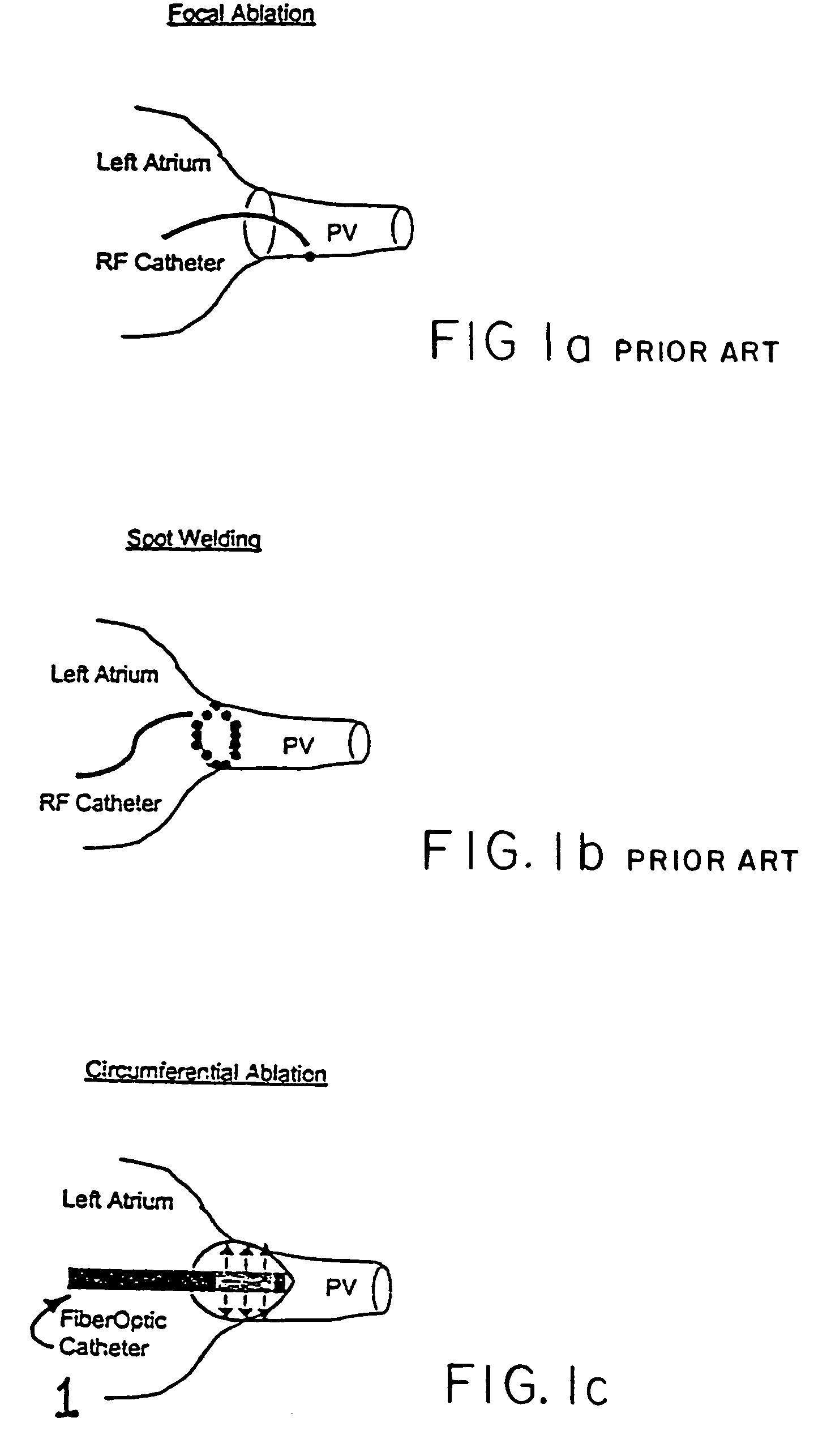Circumferential pulmonary vein ablation using a laser and fiberoptic balloon catheter
a pulmonary vein and laser technology, applied in the field of laser radiation delivery surgery, can solve the problems of limited efficacy of this procedure, blood pooling in the atria, blood clots and strokes, etc., and achieve the effect of less probability of complications, uniform tissue heating, and deep penetration
- Summary
- Abstract
- Description
- Claims
- Application Information
AI Technical Summary
Benefits of technology
Problems solved by technology
Method used
Image
Examples
examples
[0045]Preliminary pulmonary vein ablation experiments were performed in dogs, in vivo. During an open-chest procedure, the left atrial appendage was punctured, and the balloon catheter was placed into the left atrium. The balloon was filled with an optically transparent, radiopaque solution and the catheter was placed into the pulmonary veins under x-ray fluoroscopic guidance. Continuous-wave, 1.06-μm, Nd:YAG laser radiation was coupled into a 600-μm-core, 1.5 mm-OD optical fiber with a 2-cm-long radial diffusing tip. The fiber tip was placed inside a silicone rubber balloon, inflated to a 15-mm-diameter and a 30-mm-length under tension in the pulmonary veins. Continuous, circumferential lesions were created at the left atria-pulmonary vein interface using a laser power of 50 W and an irradiation time of 90 s. Three out of four pulmonary veins were ablated with a nonsteerable catheter demonstrating the ease of accessing the pulmonary veins from the left atrium (FIG. 3).
PUM
 Login to View More
Login to View More Abstract
Description
Claims
Application Information
 Login to View More
Login to View More - R&D
- Intellectual Property
- Life Sciences
- Materials
- Tech Scout
- Unparalleled Data Quality
- Higher Quality Content
- 60% Fewer Hallucinations
Browse by: Latest US Patents, China's latest patents, Technical Efficacy Thesaurus, Application Domain, Technology Topic, Popular Technical Reports.
© 2025 PatSnap. All rights reserved.Legal|Privacy policy|Modern Slavery Act Transparency Statement|Sitemap|About US| Contact US: help@patsnap.com



